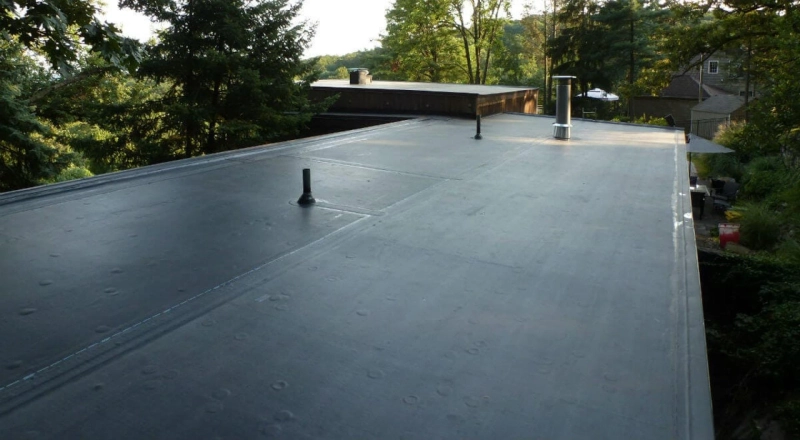EPDM, or Ethylene Propylene Diene Terpolymer, stands as a testament to innovation in the roofing industry. This versatile material has gained immense popularity due to its durability, flexibility, and cost-effectiveness. In this detailed guide, we embark on a journey to explore the intricacies of EPDM roofing, unraveling its properties, applications, and advantages.
What is EPDM?
EPDM, a synthetic rubber compound, boasts remarkable resilience and weather resistance. It is primarily composed of ethylene, propylene, and a small amount of diene monomer, hence the name Ethylene Propylene Diene Terpolymer.
EPDM offers a myriad of benefits, making it a preferred choice for roofing, automotive seals, electrical insulation, and more. Its exceptional resistance to UV radiation, ozone, and extreme temperatures makes it an ideal material for various applications.
Unveiling EPDM Roofing:
Understanding EPDM Roofing Systems:
EPDM roofing systems comprise EPDM membranes, which are single-ply sheets applied over roof substrates. These membranes come in varying thicknesses, typically ranging from 45 to 90 mils, catering to different project requirements.
Installation Process:
EPDM roofs can be installed using various methods, including fully adhered, mechanically fastened, and ballasted systems. Each method offers distinct advantages and is chosen based on factors such as roof design, budget, and climate conditions.
Advantages of EPDM Roofing:
Durability: EPDM roofs have a proven track record of lasting over 50 years with proper maintenance.Flexibility: EPDM membranes can accommodate building movements without cracking or tearing, ensuring long-term performance.Cost-Effectiveness: EPDM roofing offers excellent value for money due to its low installation and maintenance costs.EPDM in Automotive Industry:
EPDM's versatility extends beyond roofing, finding extensive use in the automotive sector. EPDM seals and gaskets provide superior resistance to heat, ozone, and chemical exposure, ensuring optimal performance and longevity of automotive components.
EPDM in Electrical Insulation:
EPDM's dielectric properties and resistance to moisture make it an excellent choice for electrical insulation. EPDM insulation ensures the safety and efficiency of electrical systems, even in harsh environments.
EPDM: Environmental Friendliness and Sustainability:
EPDM's eco-friendly composition and longevity contribute to its sustainability. As a recyclable material, EPDM reduces environmental impact by promoting resource conservation and waste reduction.
FAQs about EPDM
What are the main advantages of EPDM roofing?
EPDM roofing offers exceptional durability, flexibility, and cost-effectiveness, making it a preferred choice for commercial and residential applications.
Is EPDM roofing suitable for all climates?
Yes, EPDM roofing performs well in diverse climates, including extreme heat, cold, and humidity. Its superior weather resistance ensures longevity and performance in harsh conditions.
Can EPDM roofing be installed over existing roofs?
Yes, EPDM membranes can be installed over existing roofing materials in many cases, reducing the need for costly tear-offs and minimizing disruption to building occupants.
How long does EPDM roofing last?
When properly installed and maintained, EPDM roofing can last over 50 years, making it a long-term investment for property owners.
Is EPDM roofing environmentally friendly?
Yes, EPDM roofing is considered environmentally friendly due to its recyclable nature and minimal environmental impact throughout its lifecycle.
What maintenance is required for EPDM roofing?
EPDM roofing requires minimal maintenance, primarily consisting of periodic inspections for damage or debris accumulation. Routine cleaning and prompt repair of any issues ensure optimal performance and longevity.
Conclusion:
In conclusion, EPDM stands as a versatile and reliable solution for roofing, automotive, and electrical insulation applications. Its unmatched durability, flexibility, and eco-friendliness make it a preferred choice for discerning customers worldwide. By understanding What EPDM is and its myriad benefits, individuals and businesses can make informed decisions to enhance their projects' performance and sustainability.


